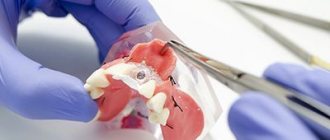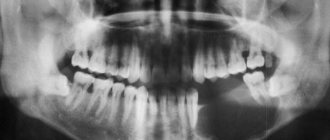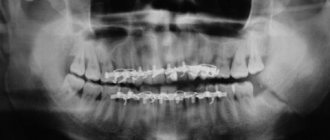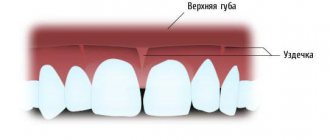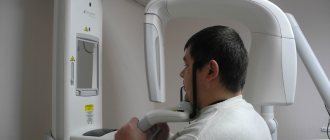It is generally accepted that beauty is expressive eyes, a straight nose and a high forehead. But it often happens that even a face with regular features seems ordinary.
This effect is also called the absence of “breed”, when the image is devoid of expressive lines and relief.
Expert comment:
“Have you ever wondered why many successful acting careers in Hollywood begin with correction of the chin and angles of the lower jaw?
The effect of "breed" and an expressive face is usually closely related to the shape of the cheekbones and lower third of the face. This is not always obvious, but it is they who form the general impression of harmony or disharmony of traits. That is why correction of the jaw, its augmentation, very often allows us to solve many appearance problems.”
Vasiliev Maxim, plastic surgeon.
Angelina Jolie
Tom Cruise
Our many years of experience in the field of appearance harmonization allows us to create an expressive jaw line that balances facial features, giving it the missing sculpture and breed.
We perform all procedures strictly after a series of anthropometric measurements and calculations, on the basis of which we individually select the size and shape of the implants. Only this approach allows you to not only make your jaw wider or narrower, but also get an attractive face on which even your worst friends will not find traces of surgical correction.
However, first, let’s figure out what is needed for a beautiful jaw.
What a beautiful jaw in men
Surely, when you hear the words “masculinity,” the first faces that come to mind are the Marlboro cowboy, Tom Cruise, or Sean O’Pry.
But if nature did not bother to develop a man’s chin area, then his appearance evokes completely different associations. Excessive softness, indecision, perhaps even weak character - these are the first impressions of a face with a small chin and soft lines of the lower jaw, even if their owner himself feels quite courageous and strong.
Expert comment:
“The reason for this perception lies in our subconscious.
Sex hormones are primarily responsible for how developed the bone structure of the lower jaw is. Protruding brow ridges, a strong-willed chin and a massive, square, well-developed jaw are testosterone traits. This is a sign of a healthy and strong man.
Such a man always attracts attention as a promising partner in his personal life and in business.
Enlargement of the jaw and chin brings the external appearance into complete harmony with the internal state of a person.”
Vasiliev Maxim, plastic surgeon.
FAQ
At what age is it recommended to have contour plastic surgery?
Injection contour plastic surgery has no age restrictions. If there are indications, the first correction can be made starting from the age of 18.
What is better for facial contouring?
All preparations used in EMC are of high quality and have proven themselves in contouring with hyaluronic acid.
Is it possible to tighten the contour of the face without surgery?
Yes, by introducing fillers you can correct the oval of the face, harmonize proportions, and make the angle of the lower jaw more expressive.
What a beautiful jaw a woman has
The structure of a woman's face has its own characteristics. In order to look beautiful and graceful, a woman needs chiseled cheekbones and a smooth jawline.
Despite the widespread dictate of Angelina Jolie's image, the convex angles of the lower jaw and protruding chin are a manifestation of masculine traits. A feminine jawline should be smoother, yet firm and well-defined.
To make the image refined and sophisticated, too pronounced angles of the lower jaw require delicate grinding of the bone tissue.
Jaw correction may be accompanied by chin augmentation and removal of Bisha's lumps to enhance the cheekbone line. These procedures allow you to tighten the skin under the chin, get rid of the double chin effect, and create a beautiful line of the chin-cervical angle.
Indications and contraindications
The absolute indication for the extension procedure is implantation in case of tissue atrophy, tooth extraction, or rejection of the installed implant.
The procedure has some contraindications:
- oncology;
- infectious, systemic, immune diseases;
- inflammatory processes of ENT organs;
- drug intolerance, allergies;
- blood clotting disorder;
- mental disorders.
A relative contraindication is pregnancy and breastfeeding.
Renaissance and plastic surgery
So, how do you understand that the lower third of the face is underdeveloped and needs correction? Take a full-face photo of yourself and mentally or with a pencil, divide your face into three parts horizontally. The upper third of the face is from the line of the nose to the middle of the eyebrows, the middle third is from the middle of the eyebrows to the tip of the nose, and the lower third is from the base of the nose to the chin. Now take a ruler and measure these three parts.
In a harmoniously beautiful face, the distance from the hair growth to the eyebrow line, from the eyebrow line to the base of the nose and from the base of the nose to the chin is approximately the same.
Even Renaissance artists showed that on a proportional face these three parts are equal. If one of them is significantly larger or smaller than the others, the face is perceived as inharmonious.
A pronounced lower jaw is a sign of “breed”
The angles of the lower jaw give grace and aristocracy. It is believed that a pronounced lower jaw is a sign of “breed”, which can affect society’s perception of a person.
To make the image refined and sophisticated, fillers are used. Jaw contouring is an excellent alternative to surgery to solve problems associated with defects in appearance. Thanks to fillers, dimples on the chin are removed, jaw angles are corrected, and the desired shape is created.
The huge advantage of this method is that the correction can be done in one procedure, the result is visible immediately!
Non-surgical correction of the angles of the lower jaw with fillers
Is it possible to increase the angles of the lower jaw without surgery? If the bone deficiency is minor, we suggest trying fillers in the lower jaw.
Temporary increase in the angles of the lower jaw with filler.
Performed: upper blepharoplasty, ️installation of a chin implant, medial and lateral platysmaplasty with neck lift through an incision in the earlobes.
Performed by a surgeon - Maxim Vasiliev .
At Platinental we use Voluma, Radiess or Juvederm fillers for this purpose - they are quite dense, safe and create the desired contour for a long time.
The main disadvantage of increasing the angles of the lower jaw with fillers is that the effect is temporary: the gel is completely absorbed, and after two years the fillers will need to be reinjected.
However, this procedure can be considered a rehearsal. If you like the result, it makes sense to consider permanent correction of the angles of the lower jaw with implants.
What to do after the procedure
No special rehabilitation is required after such an intervention. The result is noticeable immediately; there are usually no traces left after the injections. In the first couple of days after the session, you need to protect your face as much as possible, try not to touch it unless necessary (so as not to cause an infection). You cannot use foundation and powder. For 2 weeks after the procedure, it is not recommended to sunbathe on the beach or in the solarium, or visit the bathhouse or sauna.
After this time, you can return to your normal life and enjoy the results.
To make an appointment for correction of jaw angles in Moscow, just call us or use the form on the website. We are located in the very center of Moscow, next to the Baumanskaya metro station and 1905 Goda Street. Our specialists will select the optimal solution for your case and help you achieve the best aesthetic result.
Jaw contouring with permanent implants
A much greater effect will be achieved by increasing the angles of the jaw using porous Medpor implants.
Expert comment:
“Medpor is a very dense porous biomaterial that has been known in plastic surgery for more than 30 years.
Medpor is ideally compatible with tissues and does not require special fixation to the bone. It grows with connective tissue and blood vessels and literally becomes “one” with its own bone tissue.”
Andrey Iskornev, plastic surgeon
We always start with careful planning of the operation. Our task is not just to build up the lower jaw, we look at the issue much more broadly and our goal is to create a beautiful, harmonious face. Enlarging your lower jaw should improve your appearance.
Therefore, in addition to experience in plastic surgery, the doctor must have artistic taste and an analytical mind.
All jaw angle implants are always selected individually in accordance with the concept of appearance harmonization. In difficult cases, a stereolithographic model of the skull is performed to plan the operation and select implants.
Types of bone grafting
The anatomical structure of the lower jaw bone differs from the upper one. Its atrophy can be horizontal, vertical and combined, and also have different localization and severity. These factors are decisive for choosing the optimal reconstruction method. The doctor also pays attention to the structure of weakened areas.
Osteoplasty methods differ in the technique used:
Splitting of the alveolar process – delamination of the alveolar ridge area, fastening of implants, filling the cavity with osteoplast. The technology is characterized by a high level of injuries.
Directed regeneration – using autologous bone (shavings) with xeno materials, covered with a barrier membrane and sutured.
Bone block transplantation is an extension using the patient’s own tissue taken from other areas. It is possible to transplant material from another person or animal.
The choice of technique depends on the clinical situation. The best option for correcting the lower third of the face is selected individually. Regardless of the type of pathology, the operation is performed according to a strictly developed algorithm, according to the protocol. The recovery period depends on the characteristics of the body. It can last from 2 months to a year.
When performing maxillary reconstruction, materials of various origins are used:
- Autogenous (transplant from the patient himself).
- Allogeneic (donor, from another person).
- Alloplastic (synthetic).
- Xenogeneic (animal biomaterial).
The question of the need for osteoplasty is decided by the doctor in each specific case based on the examination of the patient and diagnosis.
How is plastic surgery of the angles of the lower jaw performed?
After planning the implant, it is time for surgery. It lasts about an hour under general anesthesia. We usually use intraoral access, so there are no stitches on the face after surgery.
Of course, jaw augmentation surgery, like any plastic surgery, requires time for rehabilitation. The recovery period lasts about two weeks, and for the first few days you will have to wear a bandage that helps stabilize the implant.
Subsequently, there is no danger of it migrating: the pores of the material from which the implant is made grow with connective tissue so that the implant simply grows into the bone tissue. The implant is installed once and for life, does not require replacement.
Diagnosis and treatment of patients with deformities of the lower jaw in the angular area
The problem of diagnosing disproportion in the lower zone of the face and treating patients with this pathology, which is expressed in the form of a protruding angle of the lower jaw and causes an aesthetic problem for many people, especially females, is considered. A set of diagnostic methods is presented, which makes it possible to differentiate types of pathology into groups to facilitate the choice of treatment methods. Treatment methods that allow obtaining high aesthetic and functional results are presented.
The increase in the number of patients turning to a surgeon to change their face shape is due to increased migration, as well as the desire of women to have more graceful, sophisticated and at the same time proportional facial contours.
Progress in maxillofacial surgery has made it possible to consider the issues of diagnosis, planning and treatment of patients with deformities of the facial skeleton from different angles. However, a trend has emerged that cannot be ignored due to the growth of urbanization and the expansion of plastic surgery capabilities. A number of deformations have been identified, the treatment of which is aimed, rather, at the aesthetic aspects of facial anatomy, rather than at functional disorders of the dentofacial system. These are the so-called facial disproportions, which are characterized by deviations from the norm in the sizes of the lower, middle and upper zones of the face, both in the sagittal plane and in the transversal and vertical.
One of these deformations is the protruding angles of the lower jaw, which, according to the pathogenetic mechanisms of development, are related to hypertrophy of the masticatory muscles.
L. Whitaker first reported the possibility of reducing the width of the lower third of the face using osteotomy of the outer cortical plate of the angle of the mandible along with the masseter muscle. After Legg's first report of m. hypertrophy. masseter, many authors began to use partial myectomy m. masseter W. Adams and J. Converse proposed correcting this pathology surgically, using resection of m. masseter, and ostectomy of the angles of the lower jaw either externally or intraorally. Yang and Park, S. Baek et al. also proposed surgical classification and treatment, and divided patients into three groups, followed by surgical correction of the angular contours only. But the protruding angles of the lower zone of the face must be considered as a whole, from the point of view of the harmony of the entire face, and correction of not only the angles of the jaw, but also muscle hypertrophy, deformation of the chin, using a differentiated approach.
After analyzing foreign literature, we came across a huge variety of terms that can be used to designate disproportion in the lower zone of the face, characterized by wide and enlarged angles of the lower jaw. In the international classification, the term “hypertrophy of the masticatory muscles” is used, which characterizes changes in the bone tissue of the lower jaw. Since most of such work was carried out by scientists from Asia, where resection of the angles of the lower jaw is a popular operation, we decided to use their terminology, namely to call such a disproportion the protruding angles of the lower jaw, since this term most accurately characterizes it and we do not use this term in the domestic literature met.
Without dwelling on the description of the anatomy of the angle of the lower jaw, the parotid-masticatory region, which is well covered in the medical literature, it should be noted that manifestations of disproportion are caused by both the increase in the angle of the lower jaw (usually against the background of underdevelopment of the chin of the lower jaw), and by a change in the shape of the angle in the transversal and sagittal planes.
Most publications describe various methods for treating protruding mandibular angles. However, the authors did not conduct a thorough scientific study of diagnostic methods, did not differentiate the diverse forms of this pathology and did not determine the exact indications for the use of certain treatment methods, which was the reason for discussing this urgent problem of reconstructive plastic surgery.
facial surgery.
Material and methods
Over the past 10 years, 30 patients have come to us with protruding angles of the lower jaw. We spent at
They provide surgical and non-surgical correction of facial contours in order to improve its aesthetics and solve the psychosocial problems of patients. The age of the patients ranged from 19 to 42 years, there were 40 women and 6 men.
Preoperative diagnostics included the following examination methods: clinical examination, anthropometry, clinical photography, multislice computed tomography (MSCT), electromyography (EMG) of the masticatory muscles, ultrasound of the masticatory muscles themselves.
Clinical photometry was carried out using a semi-professional Nikon D500 SLR camera (focal length 1.5 m). Patients were photographed in frontal, profile, semi-profile and axial views. Particularly valuable results were obtained after 3D processing of data obtained using a multislice computed tomograph (Fig. 1).
Rice. 1. Three-dimensional construction of the facial skull.
This provided objective visualization, volumetric-spatial representation of the intervention area and made it possible to assess the volume of the upcoming correction. We obtained digital computed tomography data using MSCT performed on a SIEMENS Sensation 16 device. They were used to construct a three-dimensional model of the facial skull in the preoperative and postoperative periods, as well as to plan the possible results of the upcoming treatment.
Functional studies of the masticatory muscles are also important. Many of the patients who came to us with hypertrophy of the masticatory muscles themselves complained that, especially in the afternoon and at night, they noticed discomfort, expressed in tension and fatigue in the area of the angles of the lower jaw, as with one of the symptoms of bruxism. Patients suffering from bruxism identified by neurological examination were excluded from the study.
All patients with protruding mandibular angles underwent EMG recording the force of jaw compression. EMG was performed using the SINAPSIS device in the preoperative period, as well as in the early and late stages of the postoperative period. EMG made it possible to record and evaluate bioelectrical processes in the masticatory muscles, correlate the recorded values with the values obtained during a clinical examination, with MSCT and ultrasound data, and also outline a treatment plan. In addition, studying the electrical biopotentials of muscles helps to prevent such complications as weakness of chewing functions in the postoperative period, i.e. EMG data of the masticatory muscles objectively show the maximum volume of myectomy.
The above examination methods were used in the preoperative, postoperative periods and in the long term after treatment. Analysis of data from all examination methods obtained at the preoperative stage allowed us to classify patients based on the morphological features of the deformities:
Group 1 - mild deformity with protrusion of the corners in the posteroinferior direction, i.e. in the sagittal plane, which reveals the facial profile;
2nd group - noticeable protrusion of the corners not only in the sagittal plane, but also in the lateral (main deformity);
3rd - there are pronounced features of the 2nd group in combination with hypertrophy of m. masseter; 4th group - the deformation is based only on hypertrophy of m. masseter
Of our 30 patients, 6 were assigned to group 1, 11 to group 2, 9 to group 3, and 4 to group 4.
Patients of the first 3 groups were treated surgically, patients of the 4th group received botulinum toxin injections
type A in a dose of 20 units. into the chewing muscles themselves.
Operation techniques
All operations were performed under general anesthesia with endotracheal intubation. We only used
intraoral surgical access. The incision of the mucous membrane began in the retromolar region 1 cm above the last lower molar and then continued along the lower buccal-alveolar fold of the vestibule of the mouth to the projection of the 1st lower molar. Then you should go to the periosteum, covering the area of the bone of the lower jaw behind and downward from the last lower molar. The periosteum is dissected and exfoliated along with the fibers attached to it m. masseter to the area required to open the entire angle of the lower jaw. In patients of the 1st group, marginal resection of the mandibular angle with bending osteotomy was then used, in patients of the 2nd group - sagittal splitting ostectomy of the mandibular angle, in patients of the 3rd group - sagittal splitting ostectomy of the angle and partial resection of the masticatory muscles themselves (Fig. 2) .
Rice. 2. Patient A. before (left) and 6 years after surgery (right).
During myectomy, the internal fibers of m. were resected along the sagittal plane. masseter The volume of bone and muscle resection was determined according to data obtained after calculations and processing of the results of the preoperative examination, and was agreed with the patient. After removing the excess mandibular angle, the so-called contouring of the angles was carried out, as a result of which it was possible to obtain the maximum natural shape of the mandibular angle (Fig. 3, 4).
Rice. 3. Patient E. before surgery.
Rice. 4. Patient E. after surgery.
In the early surgical period (days 15–20) and in the long term after surgery (1–5 years), we used the same examination methods as before treatment.
According to an analysis of the results of treatment of patients with protruding angles of the lower jaw: in 25 out of 30
the person achieved a satisfactory result, the square contours of the lower area of the face were corrected
more refined, the face became proportional, acquired an oval shape, and symmetry was preserved. In 1 patient, asymmetry persisted for 1 month, associated with hematoma and asymmetrical edema that occurred in the early postoperative period. After 1 month, the asymmetry gradually disappeared spontaneously; no special re-surgical correction was required. All patients in group 4 achieved partial correction; the effect lasted an average of 3-4 months, after which additional botulinum toxin injections were required (Fig. 5).
Rice. 5. Patient R. before (left) and after (right) treatment with botulinum toxin.
Conclusion
The results of studies conducted in 30 patients with protruding angles of the lower jaw, the complex of diagnostic methods we developed and the distribution of patients into clinical groups depending on anatomical and anthropometric indicators turned out to be effective, which contributed to obtaining good aesthetic and functional results.
Authors:
Doctor of Medical Sciences F.H. Nabiev, asp. K.V. Filippov, asp. P.V. Libin
Reasons for the development of micrognathia
Anomalies of jaw development can be congenital or acquired.
Congenital ones include:
- Severe acute illnesses of a woman during pregnancy,
- Anomalies of intrauterine development of the fetus,
- Congenital pathologies of the development of the dental system,
- Genetic predisposition.
An acquired anomaly can result from:
- Maxillofacial trauma,
- Artificial feeding and improper sucking in infancy,
- Diseases of the endocrine system,
- Past infectious diseases and inflammatory processes,
- Early loss of baby teeth,
- Problems with nasal breathing.
Indications for cheekbone contouring
The only indication for this procedure is the patient’s desire to improve his appearance by correcting certain blemishes on the face. Their most common requests include:
- changing the contour of the face, the shape of the cheekbones and cheeks;
- lifting facial tissues, eliminating ptosis by enlarging the cheekbones;
- correction of facial asymmetry;
- improvement of facial skin condition - rejuvenation and intense hydration.
Most often, during cheekbone contouring, all of the above problems are solved simultaneously, so the procedure is considered universal.
Discussion
Increasing complexity of the surgical technique increases the risk of errors and possible complications, the most likely of which are asymmetries and instability of fragments. That is why we have described in detail the fixation technique, which, in our opinion, is the key to a favorable outcome of the operation and the course of the postoperative period. In our sample, there were complications in 3 cases: 1 suture dehiscence (8th day after surgery) and 2 peri-implantitis (12th and 27th days) at the site of installation of the bone block in the diastasis. In these cases, we postpone wound revision for at least 3-4 weeks from the moment of surgery (until the lower fragment is stabilized) and limit ourselves to conservative treatment and drug therapy.
CHIN PLASTY – ANTI-AGING EFFECT
After chin augmentation surgery, almost all patients note that their face looks not only more beautiful, but also younger. Everything is very simple! The increased size of the chin protuberance compensates for the missing volume of subcutaneous tissue, thanks to which all folds of the skin are straightened, jowls and wrinkles disappear, and the skin under the chin is tightened. But it is also prevention. Let's reveal a secret - people with a small (sloping) chin age earlier and more noticeably.
Chin plastic surgery (especially augmentation mentoplasty) is popular not only among women, but also among men. After all, it’s hard to imagine a man’s face without a beautiful, strong-willed chin.
Chin surgery is often performed simultaneously with rhinoplasty. If a small chin is adjacent to a large nose (the “parrot profile” effect) or the patient does not like the predatory profile with a hooked nose and a protruding chin, a comprehensive correction can be performed. This operation is called profiloplasty. We write about complex chin and nose surgery here.
Chin augmentation can be performed either with or without an implant (due to rotation of the bony protrusion of the chin). And, of course, Dr. Kudinova can not only enlarge, but also (which is much more difficult!) reduce your chin.
Kudinova Ekaterina Sergeevna
Candidate of Medical Sciences, certificates in plastic and maxillofacial surgery. International expert in face and neck lifts, eyelid surgery, eyebrow surgery, chin surgery, etc.
To learn more



